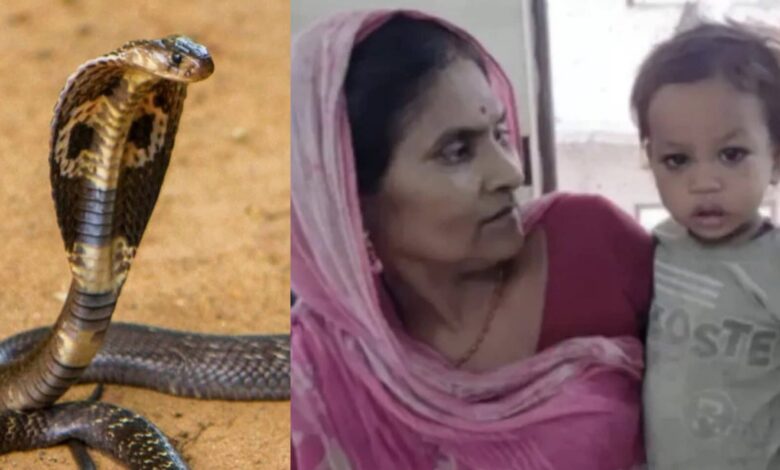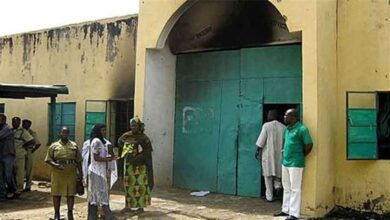2-Year-Old Boy ßites Cobra To Ð3ath In India

Two-year-old Govinda Kumar was playing in his home in Bankatwa, a village in the eastern Indian state of Bihar, when he spotted the three-foot long snake and grabbed it.
The cobra lunged at the child and coiled itself around his tiny hands during the incident on Friday, his relatives said.
But instead of screaming, Govinda put the snake’s head in its mouth and clenched his jaw, Mateshwari Devi, the boy’s grandmother, recounted.
He quickly lost consciousness after ingesting some of the deadly venom, but was treated in hospital and has since been discharged.
The snake died on the spot.
Ms Devi said: “I was moving firewood near the house and the cobra came out. The child perhaps saw the snake moving and caught hold of it.
“We rushed towards the boy and saw he had taken the cobra’s head into his mouth. We then separated the cobra from his mouth and hands.”
She added: “The cobra died on the spot, while the child fell unconscious.”
The family rushed him to a nearby health centre for treatment. He was later transferred to Government Medical College and Hospital (GMCH) Bettiah for specialist care.
Doctors at the paediatrics department of the GMCH Bettiah said they receive five to six snake bite cases every month during the rainy season but this was the first time they have seen such a “highly unusual case” where a child has bitten and eaten part of the cobra.
Cobras are highly venomous snakes, with toxic bites capable of killing a human within hours by paralysing respiratory muscles.
Dr Saurab Kumar, associate professor in the GMCH Bettiah’s paediatrics department, told The Telegraph: “I received the child active and alert but his mouth and face was swollen because of the reaction to the venom in the oral cavity.
“We were surprised and cross-checked with his parents multiple times to ensure the child was not bitten by the cobra to rule out that venom had not gone into his bloodstream. They told us he bit the cobra and the snake died on the spot.”
He continued: “The child had eaten a part of the cobra and the venom had gone into his digestive tract, unlike in the cases where the cobra bites the person and venom goes into blood and triggers neurotoxicity.
“We gave him anti-allergy medicine and kept him under watch. As he didn’t develop any symptoms for 48 hours, we discharged the child on Saturday.”
Dr Kumar said the cobra had died apparently because of the trauma to the head and mouth from the child’s bite.
India is home to 300 species of snakes, including 16 which are highly venomous. The “big four”, which are responsible for most snake bites, include the spectacled cobra, common krait, Russel’s viper, and saw-scaled viper.
Between 2000-2019, the country recorded over a million snakebite-related deaths, according to a study in the journal eLife.
Heavy rainfall and increasing urbanisation has driven snakes out of their natural habitats and increasingly into residential areas, wildlife experts say.





